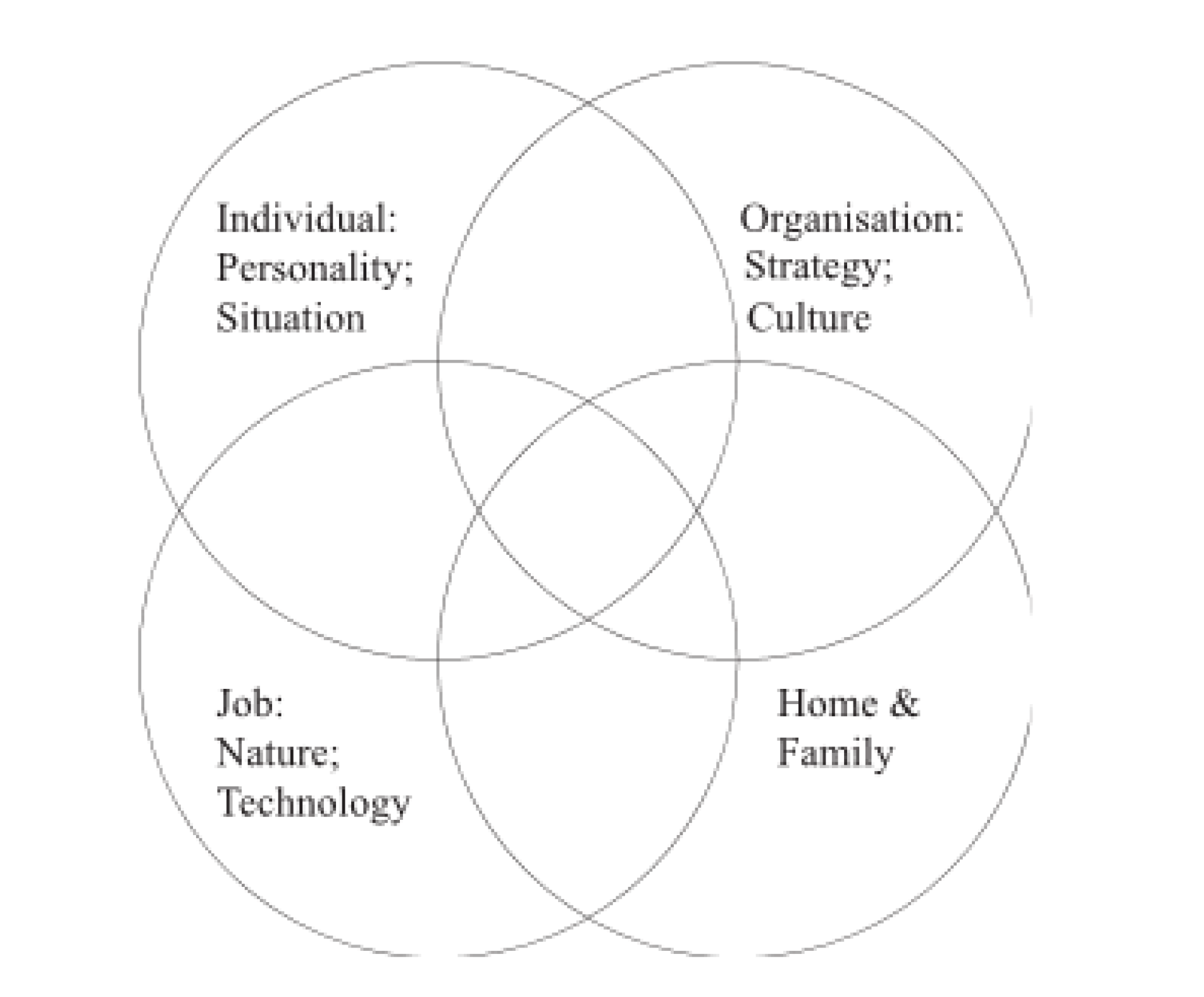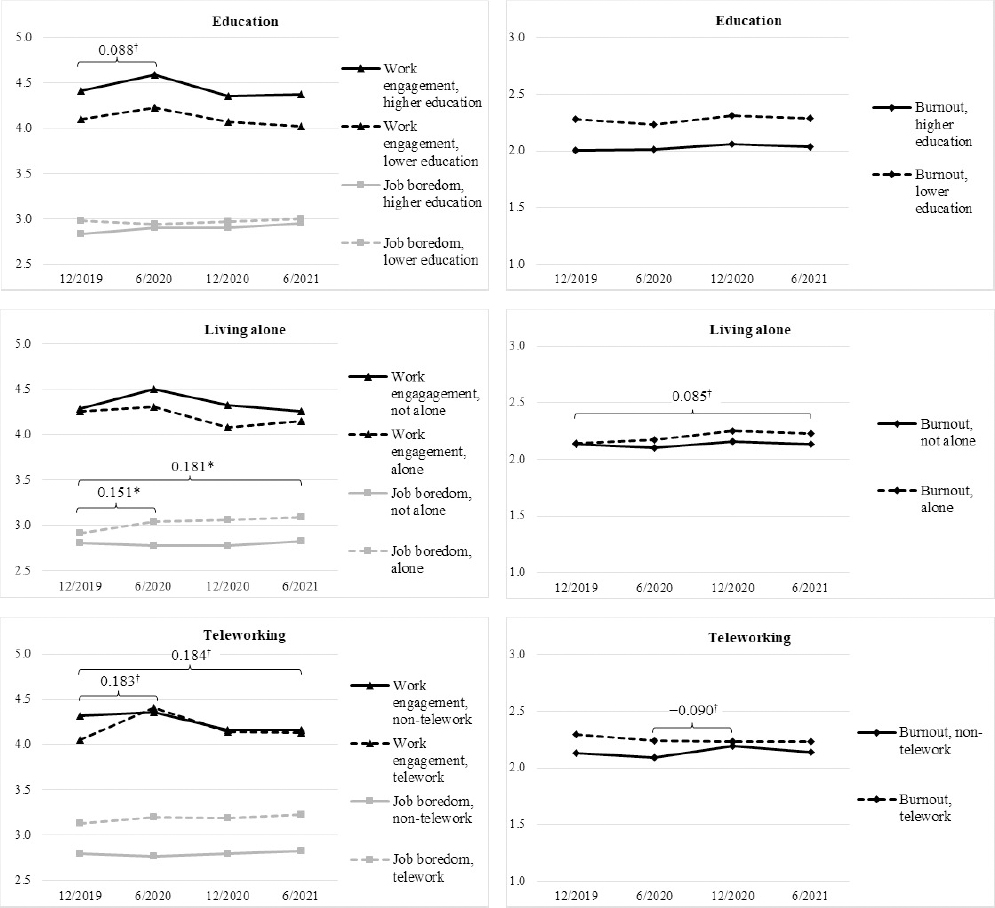Telework Education Jobs - Politics & International Policy Immigration & Migration Race & Ethnicity Religion Generation & Age Gender & LGBTQ Family & Relations Economics & Labor Science Internet & Technology News Habits & Media Research Media Complete Topic List
Parents in Boston work from home on April 14 during a stay-at-home coronavirus advisory, while their son, age 5, entertains himself. (Craig F. Walker/The Boston Globe via Getty Images)
Telework Education Jobs

The option to work remotely - working by phone - could prove to be a financial lifeline for many workers during the Covid-19 recession, which has shut down much of the US economy and caused about 30 million American workers to file for unemployment insurance. From mid-March 2020.
Remote Work Is Bad For Productivity — And For Your Career
In the early stages of the economic downturn of the epidemic, 90% of the job losses - or 2.6 million of the total losses of 2.9 million between February and March - arose from positions that could not work, according to a new analysis by the Church Research Center. Federal Information.
While many workers can't wait tables or cut hair, others, especially college-educated ones, can go online and continue teaching, delivering sermons or trading stocks.
This pattern of job losses may change due to the deep economic crisis, and spread across a large number of economies. The Congressional Budget Office estimates that the number of employed workers will fall by nearly 27 million in the coming months, about nine times the loss from February to March. At the same time, there are signs that the jobs of many white-collar workers are at increased risk. It is likely that the ability to work remotely will offer less protection as COVID-19 retreats closer to its core.
The Covid-19 pandemic has made social distancing a necessity, which has led to the closure of workplaces and the displacement of many workers to work from home. This analysis focuses on employment in telecommuting and non-telecommuting occupations, by workforce demographics, and how employment in those occupations changed in the months preceding the shutdown of US business activity.
The Future Of Remote Work: An Analysis Of 2,000 Tasks, 800 Jobs, And 9 Countries
In this analysis, the grouping of jobs by whether they can be used on the phone is based on a classification recently developed by researchers at the University of Chicago, with minor modifications. Employment estimates in this analysis are derived from the Current Population Survey (CPS), the government's official source for monthly unemployment estimates. The employment code at CPS does not exactly correspond to the code used in the University of Chicago education, resulting in some adjustments. For some other occupations, the Chicago researchers' classification did not reflect the actual results of the labor market last week. For example, researchers have grouped athletes, sports competitors, coaches and scouts among the jobs that can be used on the phone, but these are some of the first jobs to close. Our analysis places such jobs into the non-telecommutable job category. Estimates in this analysis are seasonally adjusted.
The COVID-19 outbreak has affected the US government's data collection efforts in its surveys, particularly limiting manual data collection. This caused the CPS response rate to drop by about 10 percent in March 2020, compared to the previous month. It is possible that some measures of employment and population composition are affected by these changes in data collection.
In February, before the economic impact of the coronavirus outbreak really took hold, 40% of the American workforce, or 63 million people, were employed in jobs that could be performed remotely, such as computer programmers, economists and human resources managers. job

Telecommuting accounts for 60% of US employment, or 95 million people. This includes jobs such as dentists, carpenters, mechanics and other jobs that usually involve interacting with people, working outdoors or operating machines or equipment, according to a classification system recently developed by researchers at the University of Chicago and adapted for this analysis by Pew Research. . Center.
Work From Home Access Is Skewed Across U.s. Race, Education Gap
The level of education of workers is an important determinant of whether they hold a job that can be teleworked. In February, 62% of employees with a bachelor's degree or more education had a job that could be done remotely. That's nearly twice as many workers with a college degree (33%), including a bachelor's degree, and nearly three times the proportion of high school graduates who didn't go to university (22%). A small number of workers who did not complete high school (9%) had the option of telecommuting.
Women are more likely than men to telecommute, 46% versus 35%. In part, this is because employed women have higher levels of education - 42% had at least a bachelor's degree in February, compared to 37% of employed men. But because women are strong in careers that can be done remotely. For example, 23% of employed women have jobs in education and administrative support, compared to only 7% of employed men.
Among racial and ethnic groups, 48% of Asian workers and 44% of white workers could telework, compared with 34% of black workers and 26% of Hispanic workers. Differences in education levels are another factor. In February, about two-thirds (66%) of Asian workers had a bachelor's degree or higher, compared with 44% of white workers, 33% of black workers and 21% of Hispanic workers.
However, Hispanic workers at all levels of education are less likely than US workers overall. In February, 55% of Hispanic workers with a college degree could work by phone, compared to 62% of all college graduates. Differences in employment also contribute to the telecommuting gap. In February, 18% of Hispanic workers worked in construction or manufacturing, compared to 10% of the overall workforce. In contrast, only 24% of Hispanic workers have management, career and related jobs, compared to 42% of all US workers.
No Sign Of Widespread 'zoom Fatigue' As Telework Continues For Many
Among the nation's workforce as a whole, immigrants lag behind the US-born in their ability to work on the phone. While 31% of foreign-born workers were able to work remotely in February, 42% of US-born workers were able to work remotely as well. This gap is largely driven by the large number of Hispanic immigrant workers, who account for 46% of all foreign workers. Of the 12.2 million Hispanic migrant workers in February, only 18% were employed.Telephone jobs only, compared to 31% of all migrant workers. In an economic climate fueled by the coronavirus, education plays an important role in diminishing the job prospects of Hispanic immigrants. Only 18% of Hispanic immigrant workers have a bachelor's degree or more.
Although the ability to work remotely does not guarantee continuous employment, it has become a real option for many workers in the Internet age. About 73% of American adults reported having broadband access at home in 2019, and 25% of workers worked from home at least once in 2017-18. The share of people working from home may increase as workplaces adapt to the post-COVID-19 environment.
There is evidence that telecommuting is more common than before the COVID-19 outbreak. In a Pew Research Center survey conducted at the end of March 2020, 40% of adults aged 18 to 64 reported that they were working from home due to the coronavirus outbreak. This is equal to the share of American employees who, in this analysis, are expected to hold on-call jobs. The potential of the labor market to compensate for job losses by switching to telecommuting can be extended to capacity. And some people - especially blacks, Hispanics and low-income workers - the ability to work on the phone can be affected by home broadband access.

As noted, job losses in the early stages of the Covid-19 pandemic were concentrated among workers who could not telecommute. From February to March, US employment fell by 2.9 million, a loss of 1.8%. This was driven almost entirely by a 2.6 million (-2.7%) job decline in non-telecommuting jobs. Employment in telecommunications jobs was essentially unchanged, down 300,000 (-0.5%).
Mothers Bear The Cost Of The Pandemic Shift To Remote Work
The safety net offered by telecommuting jobs for most workers. For example, among women, employment decreased by 3.6% in occupations that cannot telecommute, compared to a 0.4% decline in occupations that can telecommute. Men have a similar experience, except for the loss of work that cannot be used by the phone (-2.0%) less than women.
But employment results differ, especially according to race and ethnicity. black workers who can telework saw their jobs drop significantly (-4.3%) more than black workers who can't telework (-1.4%). The reason for this is unclear. A contributing factor may be a large loss for black workers in sales and related occupations, health and technical jobs partially offset by gains in architecture and engineering, as well as construction and mining.
Hispanic workers who are not likely to telecommute saw a decline in employment (-5.0%) from February to March. This was followed by foreign-born Hispanic workers, with employment falling 7.5% in this occupation, compared to a 2.4% loss among US-born Hispanic workers. Meanwhile, the employment of all Hispanic workers in jobs that can work by phone
3.7% This represents the experience of US-born Hispanic workers, who
Post A Comment:
0 comments so far,add yours